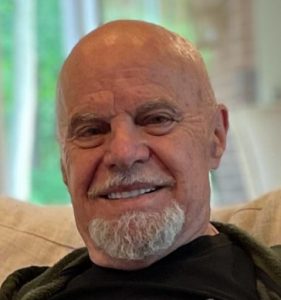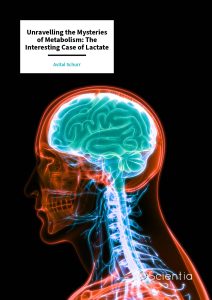Professor Avital Schurr | Unravelling the Mysteries of Metabolism: The Interesting Case of Lactate
Understanding the biochemical processes that occur in human cells is vital for the development of treatments and the advancement of medicine more generally. Professor Avital Schurr at the University of Louisville School of Medicine, Kentucky, is an expert in neurochemistry and neurophysiology. In recent work, he explored the role of a particular molecule called lactate in the metabolic processes of the central nervous system.
New Approaches for Neuroenergetics
The human brain uses a significant portion of the body’s energy daily. Neuroenergetics is the term used for the energy-producing processes in the central nervous system, which ensure normal, healthy, and continuous brain function. The energy required for cells, and the whole body to function, is obtained from the breakdown of glucose within cells in a process called respiration. Respiration happens when glucose and oxygen come together to release energy, and this occurs as a multi-step process within mitochondria – small organelles, often referred to as the ‘powerhouses’ of the cell.
The initial step in respiration is called glycolysis, which occurs in the cell outside the mitochondria. Glycolysis does not require oxygen. It involves eleven different reactions, resulting in the production of an intermediate molecule called pyruvate and ends with the production of lactate. Professor Avital Schurr from the University of Louisville School of Medicine in Kentucky, has brought much-needed clarification to the previously misunderstood role of lactate in cell metabolism and neuroenergetics.
Gaining a Bad Reputation
Lactic acid (lactate), produced by lactobacilli bacteria, causes milk to sour. Professor Schurr explains that this negative connotation seems to have been associated with lactate when it was discovered that muscle cells produce it during anaerobic conditions. Anaerobic means ‘without oxygen’, and anaerobic respiration can occur in different situations, such as during intense physical exercise or periods of ischaemia (when the blood supply to a particular tissue becomes restricted due to certain medical conditions).
Historically, scientists thought lactate was just a by-product of glucose metabolism, even in the presence of oxygen, and muscle cells could somehow quickly remove it. This idea of lactate being nothing more than an undesirable waste product continued unchallenged for many years. Early studies conducted in the 1920s and 1930s on in vitro brain tissues found that supplying oxygen could reduce lactate levels. However, this was thought to be a type of disposal mechanism, and the idea of lactate being a worthless and even potentially toxic product of glucose breakdown was reinforced.

Glycolysis, a metabolic pathway composed of eleven enzymatic reactions that begins with glucose and ends with lactate. Glycolysis requires neither oxygen nor mitochondria.
The Oxphos Pathway
Moving on several decades to the late 1980s, Professor Schurr notes that our understanding of neuroenergetics was suddenly revolutionised. Researchers discovered that lactate is being utilised in cells in a completely unexpected way, going against everything believed and understood about the role of this substance. Lactate went from being the villain of cell energy metabolism to a hero.
Oxidative phosphorylation, shortened to ‘oxphos’, is a metabolic pathway on the inner membranes of mitochondria within cells. Also referred to as the electron transport chain, the oxphos pathway involves numerous enzymes and organic molecules passing electrons in a series of chemical reactions that result in the formation of adenosine triphosphate (ATP for short), the molecule that carries energy.
Professor Schurr notes that recent research found that lactate, which is produced by glycolysis, can be used by the oxphos pathway in the absence of glucose. He notes that initially, this idea was met with great scepticism by many scientists, not only in the field of neuroenergetics and cerebral energy metabolism but also by those studying muscle energy metabolism and exercise physiology. This finding led to many researchers ignoring the increasing amount of data supporting the idea of lactate being a substrate for the oxphos pathway. He also adds that studies showing lactate as being the final product of glycolysis both in aerobic and anaerobic conditions have often been disregarded.
Time to Rebrand Glycolysis
Professor Schurr explains that there is clear evidence in support of a glycolysis pathway consisting of eleven reactions catalysed by enzymes. The result is the production of lactate and another substance called NAD+, which is an essential co-factor used within the cells for a number of fundamental processes. Importantly, glycolysis is not dependent on the presence or absence of oxygen, or even mitochondria, yet is often referred to as ‘aerobic glycolysis’ or ‘anaerobic glycolysis’. Unfortunately, this causes much confusion since it is now known that glycolysis is one distinct pathway, and it cannot be differentiated as either aerobic or anaerobic.
In his paper, Professor Schurr further clarifies this issue, stating that any prefixes assigned to glycolysis are meaningless. The outdated prefixes were based on the assumptions established in the 1940s that glycolysis had two different end products, depending on whether oxygen was present or absent. With oxygen (aerobic conditions), pyruvate was formed, while without oxygen (anaerobic conditions), lactate was formed. He highlights the absence of an explanation or pursuit of a mechanism for how the final (eleventh) step of glycolysis is somehow switched off when mitochondria and oxygen are present (resulting in the production of pyruvate), provides further evidence that oxygen has nothing to do with glycolysis. We now know that pyruvate is an intermediate product, and there is only one terminal product – lactate – so there should be only one type of glycolysis. As such, a review of the term by the scientific community and a ‘rebrand’ is well overdue.
The Future for Lactate
In recent years, multiple studies have highlighted the other roles that lactate plays. These include acting as a signalling factor and a receptor ligand, affecting cell reactions and their interactions with their environment. It seems there is still much left to learn about this misunderstood molecule.
Professor Schurr argues that the engrained beliefs about lactate have contributed to unnecessary delays to advancing knowledge and understanding neuroenergetics, which he adds is the most important biochemical process in the central nervous system. He hopes that his recent paper serves to help persuade the scientific community to revise the terminology utilised and move away from misleading prefixes when discussing glycolysis.
SHARE
DOWNLOAD E-BOOK
REFERENCE
https://doi.org/10.33548/SCIENTIA968
MEET THE RESEARCHERS

Professor Avital Schurr
Department of Anaesthesiology and Perioperative Medicine
University of Louisville School of Medicine
Louisville, KY
USA
Professor Avital Schurr obtained an MSc in Biochemistry from Tel Aviv University and a PhD in Biochemical Pharmacology from Ben Gurion University. He undertook postdoctoral work at Baylor College of Medicine, the Texas Research Institute of Mental Sciences in the Department of Neurochemistry and Neuropharmacology, and the University of Texas Medical School in the Department of Neurobiology and Anatomy. He is a Professor Emeritus in the Department of Anesthesiology and Perioperative Medicine at the University of Louisville School of Medicine. His prolific research career has focused mainly on brain energy metabolism and cerebral ischaemia/hypoxia. In 2000, Professor Schurr was given the University of Louisville School of Medicine Research Career Achievement Award.
CONTACT
KEY COLLABORATORS
The longstanding collaborations I had with the late Professor Benjamin M. Rigor, Professor Evelyne Gozal, and Professor Salvatore Passarella are greatly appreciated.
FURTHER READING
A Schurr, From rags to riches: Lactate ascension as a pivotal metabolite in neuroenergetics, Frontiers in Neuroscience, 2023, 17, 1145358. DOI: https://doi.org/10.3389/fnins.2023.1145358
REPUBLISH OUR ARTICLES
We encourage all formats of sharing and republishing of our articles. Whether you want to host on your website, publication or blog, we welcome this. Find out more
Creative Commons Licence (CC BY 4.0)
This work is licensed under a Creative Commons Attribution 4.0 International License. 
What does this mean?
Share: You can copy and redistribute the material in any medium or format
Adapt: You can change, and build upon the material for any purpose, even commercially.
Credit: You must give appropriate credit, provide a link to the license, and indicate if changes were made.
SUBSCRIBE NOW
Follow Us
MORE ARTICLES YOU MAY LIKE
Dr Ralf Adam | New Technologies Shaping the Future of Oral Hygiene
Understanding the efficiency of various toothbrush technologies is essential for achieving optimal oral health. Dr Ralf Adam, who leads a dedicated team at Procter & Gamble in Germany, is keen to investigate the complexities of these technologies. His team have provided new insights into the best toothbrush types for plaque removal and the maintenance of gum health. By highlighting the importance of informed oral care decisions and ongoing investigations, this vital research works towards ensuring everyone can achieve a brighter, healthier smile.
Dr Toby Phesse | Revealing the Mysteries of Wnt Signalling: Novel Approaches to Beating Cancer
Cancer remains a leading cause of mortality worldwide, and the need for new, more effective treatments remains an urgent challenge. Dr Toby Phesse from Cardiff University in the UK focuses on the role of the Wnt receptor found on the surface of cells and its involvement with cell communication and cancer growth, bringing fresh hopes for new therapeutic options.
Dr Vijay Reddy | The Virus World Database: An Invaluable Resource for Public Health and Healthcare
Severe viral disease presents an ongoing challenge to the health of humankind. While unparalleled developments in science and technology are improving our understanding of such viruses, this information needs to be readily accessible to researchers to ensure continued progress in public health and healthcare. Dr Vijay Reddy and his colleagues at the Hormel Institute (University of Minnesota) developed the Virus World database, an invaluable resource that details the genome, structure, and host of practically every discovered virus to date.
Professor Ralf Herwig | Deciphering the Enigma of Vitamin D and the Immune System
Vitamin D has been studied as a treatment for a large number of diseases and conditions, from cancer to autism to COVID-19. However, its mode of action is not completely understood. Professor Ralf Herwig carries out his research at HG Pharma GmbH (Austria) and Ulster University (UK). His vital work explores the role of vitamin D in the body with a view to unlocking its potential as a treatment for a variety of health conditions involving the immune system.





